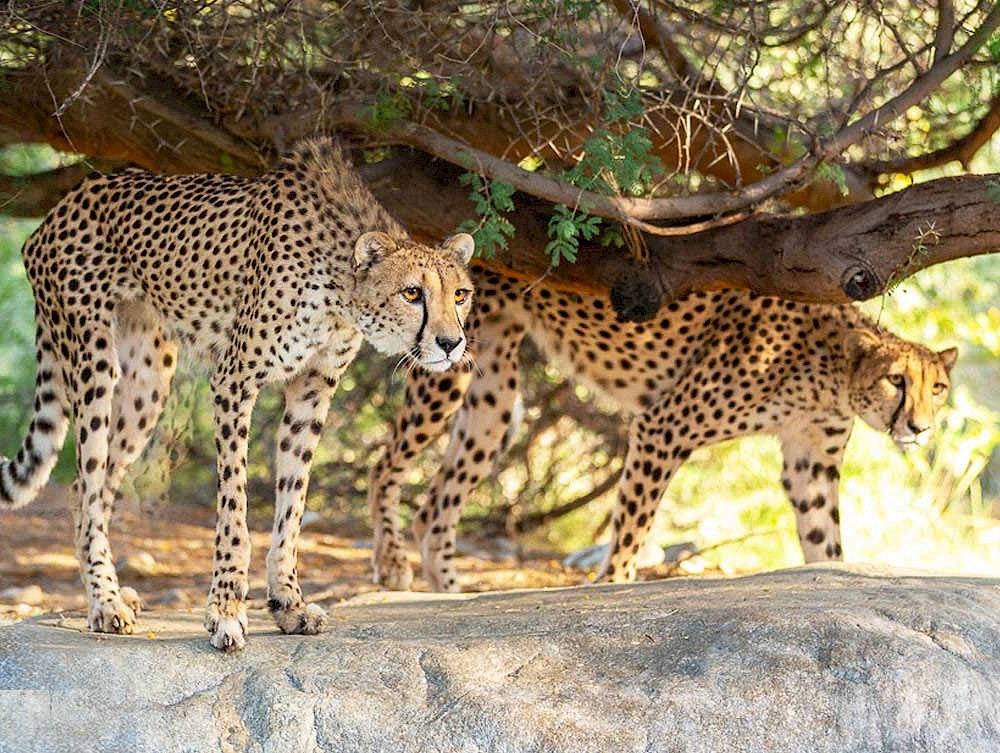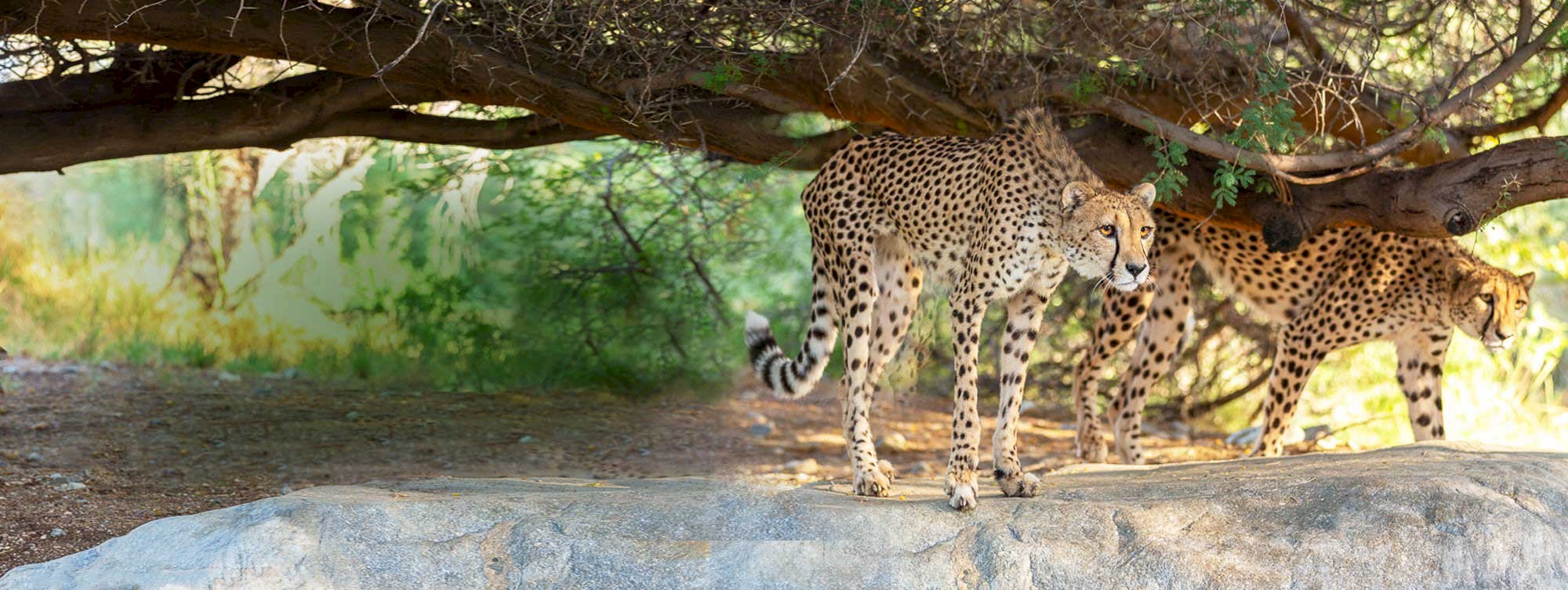Keeping Cool in the Desert
June 28, 2021
How do the animals at The Living Desert stay cool during our extremely hot temperatures in the summer? This is often a question we find ourselves answering every year as the thermometer lingers in the triple digits. As many of you know, The Living Desert is dedicated to the desert species of the world which includes the animals (and plants) that call the desert home. These species are built for the extreme and harsh elements including the soaring temperatures.
These hearty species have adaptations that help them survive and thrive while living in severe weather. Some animals have adaptations that appear outwardly. Body adaptations like the large ears on the African Wild dogs are not only good for hearing but help to dispel heat to keep them cool. Light color coats on the Arabian oryx and Addax reflect the suns heat from its intense summer rays. Other species use internal adaptations to stay cool. Reptiles and birds excrete uric acid as a white compound that lacks moisture helping to retain valuable water for their bodily functions. Vultures are known to urinate on their own legs, the urine cools them down as it evaporates. While I don’t recommend this for humans to stay cool, this does show that each species has found its own unique way to cool down in the summer heat.
The desert species that call the zoo home can thrive here in our Coachella Valley extreme temperature all on their own but we still like to offer them other experiences to cool off. These are some of the same things we humans may enjoy to cool off on a hot summer day. We may offer extra misting systems, extra pool areas or ice treats to allow the animals to make different choices throughout their day. The animal care team continually looks for imaginative ways to offer experiences for the animals to stay cool.
Many of the animal homes have built in mister systems that are on timers so we can provide that experience during the hottest parts of the day while still being water conscious. These desert species, even on the hottest day, will sometimes choose not to be in the misters and may just prefer to lie around under a shady spot. We also will create special ice treats for the animals, these can be made with water, fruits and vegetables for the herbivores or juicy, red blood-sicles for the carnivores. Mud wallows can provide another way to cool off for many of the animals who enjoy rolling around in the cool mud for some relief from the heat.
During this time of year, one of the best times to visit the zoo is early in the morning before the temperatures get too high. You might be lucky enough to spot the animals taking a splash in their pond, slurping up some icy treats or rolling around in some mud. Just like the animals, remember to stay hydrated and find those shady spots to beat the heat. Take a tip from our Living Desert teams that work outside, humans are not typically as hearty as these desert species so stay hydrated and watch out for one another.
Did You Know...
- In the Australian desert, water can be hard to come by. Animals like the thorny devil have skin that can absorb water like blotter paper, this is called capillary action. The water is collected and channels its way to the corners of the mouth.
- In the African desert, the large ears of the fennec fox serve a couple of purposes. They help to hear the smallest of bugs to eat but also are filled with blood vessels that allow for excess heat to dissipate from the body.
- In the Sonoran desert, the Gila Monster spends most of its life underground living for months off of the fat storages in its tail. This is a handy trick during the driest and hottest season.









